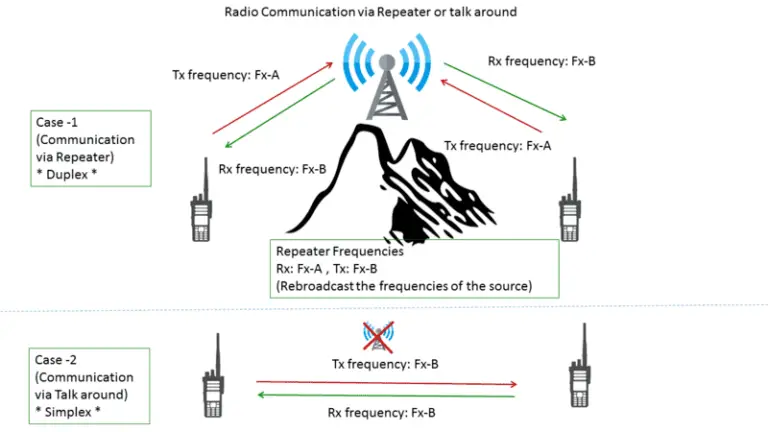5 Advantages of Landfilling Explained
Advantages of landfilling are; effective waste disposal, energy recovery, hazardous waste management, relative low cost, and carbon storage facilitation.
This article discusses landfilling advantages, as follows;
1). Effective Waste Disposal (as one of the Advantages Landfilling)
Landfilling is a preferred method of waste disposal because of its relative simplicity, low cost, versatility, and effectiveness for the management of various types of waste materials.
The effectiveness of landfilling can be attributed to the fact that it provides a means by which waste materials can be physically put away without causing congestion of any part of the ecosystem.
In landfilling, waste materials occupy space that requires filling, such as depressions, uneven slopes, and excavated land. Additionally, the waste materials are placed under conditions that enable them to be returned to the environment through biodegradation [3].
With landfilling, other waste management methods like incineration and open burning, can be replaced, along with their negative environmental impacts that include greenhouse emissions, soil/water pollution, and air quality reduction.
Landfilling supports efforts to achieve sustainability in waste management, such as recycling and waste-to-energy conversion, by handling the wastes that cannot be effectively handled through these efforts.
Large volumes of waste can be disposed effectively by dumping them in landfills, where they are compacted and covered with soil [4]. The system is very versatile as well, and can be used to dispose organic waste (biomass), agricultural, commercial, industrial, and municipal wastes.
With careful site selection, even hazardous waste can be disposed effectively through landfilling [7]. Such waste include E-waste, residue from nuclear plants, chemical waste, and wastewater sludge.

2). Energy Recovery
Landfilling can be seen as a cost-effective opportunity for energy recovery, because of the production of renewable fuels from organic waste in landfill sites [6].
Biomethane, or landfill gas, is generated as organic materials like food waste begin to decompose, in landfills.
Because the waste is usually buried under earth materials or other wastes, the decomposition process is often similar to anaerobic digestion, and can yield large quantities of biofuel as well as heat.
Energy from landfills can be used for electricity generation, as well as heating.
It is important to note that the collection of renewable fuel from landfills helps reduce the negative environmental impacts of landfilling, especially with regards to greenhouse emission and reduction of air quality.

3). Hazardous Waste Management (as one of the Advantages Landfilling)
Landfilling is applicable for the management of hazardous waste.
This includes non-recyclable industrial byproducts, and used products with high toxin-content.
In order for a landfill to be used for disposal of hazardous waste, it must be well-engineered, with precautionary measures taken to minimize contact between waste and the soil or groundwater.
Double liners can be lain at the bottom of such landfills for this purpose [1].
The concept of landfilling is used to manage nuclear waste, which is often buried to isolate it from the environment.
4). Relative Low Cost
Compared to other methods of waste management, landfilling is inexpensive, when its cost is evaluated per-ton of waste disposed.
The required investment for landfilling can be compared to that for other low-cost practices like composting, while landfilling has the added advantage of large-scale application.
Landfilling is an economic option especially where care is taken to sort waste materials before they are sent to the landfill. In such cases, material that are fit for recycling, and others which can be sent to a biorefinery or other processing plants, are excluded from the landfill garbage stream.
In cases where the resources to set up a recycling or processing plant are not available, landfilling can be a cost-effective (but not necessarily sustainable) method of waste management.
Despite its drawbacks, landfilling is still a better choice than open dumping, and improperly-maintained incineration. Here, the inexpensiveness of landfilling can be measured by its low environmental impact relative to such alternatives.
The versatility of landfilling in terms of location and types of waste, also make it less economically-demanding; as there is less need for complicated treatment or speciation.
With minor precautionary measures, landfilling can be used to effectively dispose various types of hazardous wastes.
Lastly, the capital cost for setting up a well-planned sanitary landfill, is relatively inexpensive. Studies have shown that landfills can be equipped with components for landfill gas collection and leachate treatment, at low cost [5].
Because landfilling is often practiced as a means of land restoration in sites that have experienced severe erosion of other forms of degradation, there is less demand in terms of remediation cost when landfill sites are closed.
5). Carbon Storage Facilitation (as one of the Advantages Landfilling)
Landfilling can serve as a means to optimize the function of soil as a carbon sink.
Soils in landfill sites are susceptible to accumulation of organic carbon, which is essential for improving fertility.
In such soils, carbon sequestration is accelerated by biodegradation of organic waste [2]. Such waste include food waste, agricultural waste, and other forms of biomass.
However, biodegradation in landfills also leads to greenhouse emissions, and can cause pollution of soil and groundwater by leachate. Therefore, the sequestration function may have low net effect; and landfilling itself cannot be considered part of a decarbonization strategy.
Conclusion
Advantages of landfilling are;
1. Effective Waste Disposal
2. Energy Recovery
3. Hazardous Waste Management
4. Relative Low Cost
5. Carbon Storage Facilitation
References
1). Gandhi, G.; Babu, G. L. S.; Santhosh, L. G. (2016). “Evaluation of engineered barrier system for hazardous waste disposal – A case study.” Japanese Geotechnical Society Special Publication 2(1):54-61. Available at: https://doi.org/10.3208/jgssp.KL-5. (Accessed 8 November 2022).
2). Ge, S.; Zhao, S. (2017). “Organic carbon storage change in China’s urban landfills from 1978–2014.” Environmental Research Letters 12(10):104013. Available at: https://doi.org/:10.1088/1748-9326/aa81df. (Accessed 8 November 2022)..
3). Gómez, M. A.; Baldini, M. D.; Marcos, M.; Martinez, A. M.; Fernández, S.; Reyes, S. (2012). “Aerobic microbial activity and solid waste biodegradation in a landfill located in a semi-arid region of Argentina.” Annals of Microbiology 62(2). Available at: https://doi.org/10.1007/s13213-011-0314-6. (Accessed 7 November 2022).
4). Hanson, J.; Yesiller, N.; Stockhausen, S. A.; Wong, W. W. (2010). “Compaction Characteristics of Municipal Solid Waste.” Journal of Geotechnical and Geoenvironmental Engineering 136(8). Available at: https://doi.org/10.1061/(ASCE)GT.1943-5606.0000324. (Accessed 7 November 2022).
5). Ozbay, G.; Jones, M.; Gadde, M.; Isah, S.; Attarwala, T. (2021). “Design and Operation of Effective Landfills with Minimal Effects on the Environment and Human Health.” Journal of Environmental and Public Health 2021:1-13. Available at: https://doi.org/10.1155/2021/6921607. (Accessed 8 November 2022).
6). Psomopoulos, C. S.; Kikira, K.; Kalkanis, K.; Helen, L.; Themelis, N. J. (2022). “The role of energy recovery from wastes in the decarbonization efforts of the EU power sector.” Renewable Power Generation, IET 16(1):48-64. Available at: https://doi.org/10.1049/rpg2.12315. (Accessed 8 November 2022).
7). Saeidi, M.; Abessi, O. (2009). “Site Selection of a Hazardous Waste Landfill Using GIS Technique and Priority Processing, a Power Plant Waste in Qazvin Province Case Example.” Available at: https://www.sid.ir/paper/117670/en. (Accessed 8 November 2022).


